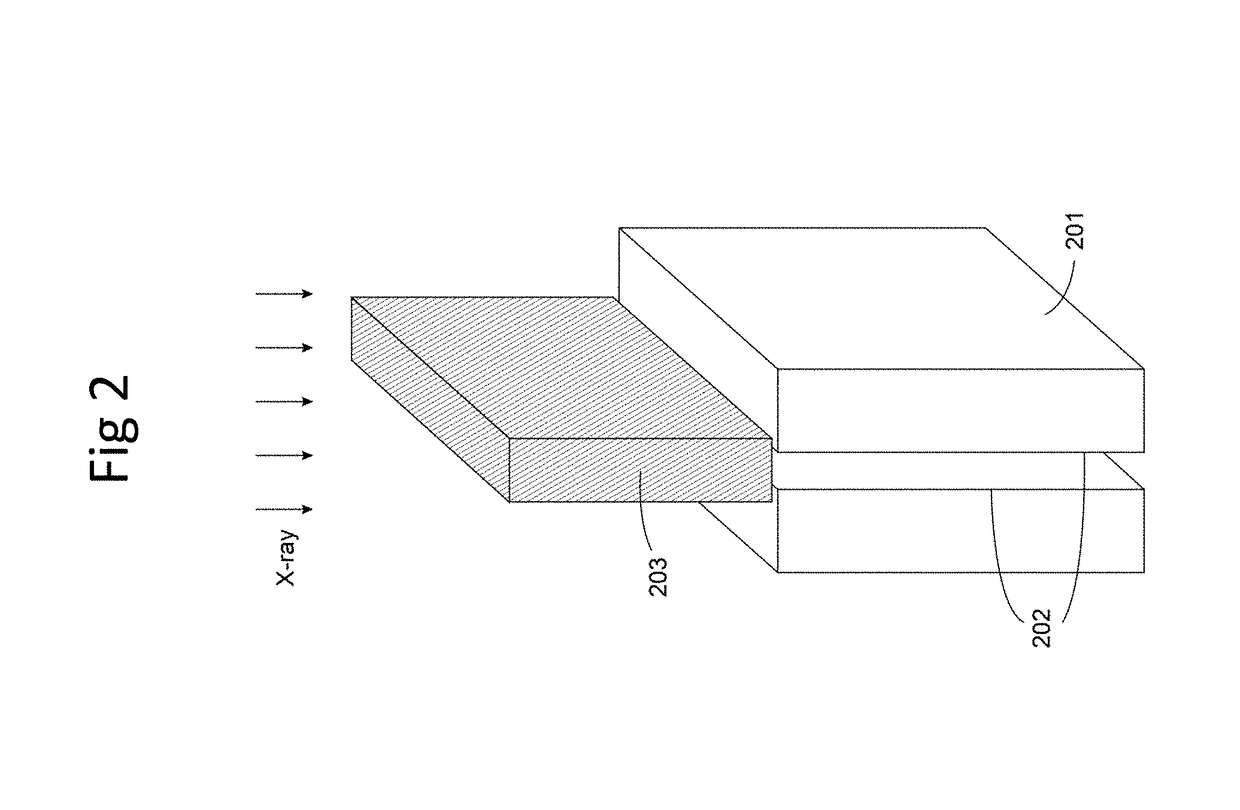Radiation hard silicon detectors for x-ray imaging
a detector and x-ray imaging technology, applied in the field of x-ray imaging detector systems, can solve the problems of silicon detector radiation damage types, silicon detector performance degradation, and possible damage, so as to improve charge collection and maintain geometrical efficiency.
- Summary
- Abstract
- Description
- Claims
- Application Information
AI Technical Summary
Benefits of technology
Problems solved by technology
Method used
Image
Examples
Embodiment Construction
[0021]FIG. 8 is a schematic diagram of an x-ray detector system according to an exemplary embodiment. In this example there is shown a schematic view of an X-ray detector with x-ray source B emitting x-rays C. The detector comprises a number of detector modules stacked side by side. The detector modules comprises an edge D pointing back towards the source, and they are preferably arranged in a slightly curved overall configuration. Two possible scanning motions (E, F) of the detector are indicated. In each scanning motion the source may be stationary or moving, in the scanning motion indicated by E the x-ray source and detector may be rotated around an object positioned in between. In the scanning motion indicated with F the detector and the source may be translated relative to the object, or the object may be moving. Also in scan motion E the object may be translated during the rotation, so called spiral scanning. By way of example, for CT implementations, the x-ray source and dete...
PUM
 Login to View More
Login to View More Abstract
Description
Claims
Application Information
 Login to View More
Login to View More - R&D
- Intellectual Property
- Life Sciences
- Materials
- Tech Scout
- Unparalleled Data Quality
- Higher Quality Content
- 60% Fewer Hallucinations
Browse by: Latest US Patents, China's latest patents, Technical Efficacy Thesaurus, Application Domain, Technology Topic, Popular Technical Reports.
© 2025 PatSnap. All rights reserved.Legal|Privacy policy|Modern Slavery Act Transparency Statement|Sitemap|About US| Contact US: help@patsnap.com



